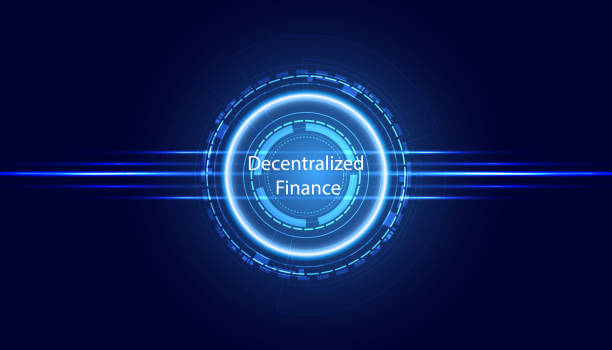In a notable turn of events last November, OpenAI’s board underwent a significant change, initially replacing CEO Sam Altman before reverting the decision, sparking discussions on Artificial Intelligence (AI) governance. This conversation gained traction at the recent World Economic Forum Annual Meeting in Davos, Switzerland.

The incident at OpenAI highlights concerns about centralized control of critical technologies. Grayscale research poses a crucial inquiry: how can we ensure that AI progress remains inclusive, competitive, and transparent? These principles align closely with those of blockchain technology, a sentiment echoed by Grayscale Research and echoed across the industry. Sheila Warren of CCI suggests that crypto will serve as a crucial mechanism for regulating AI, a sentiment shared by venture capitalist Fred Wilson, who sees AI and crypto as complementary forces, with web3 enhancing trust in AI.
Addressing Authenticity in Content
The rise of AI has exacerbated the issue of misinformation and bots, particularly concerning as experts anticipate deepfakes influencing the 2024 US presidential election. Public blockchains, with their transparent and tamper-resistant ledgers, offer a potential solution to combat this threat.
One notable effort in this space is Worldcoin, co-founded by Sam Altman, aiming to register individuals worldwide through biometric scans to differentiate humans from bots, incentivized by a dedicated blockchain token. Since its launch six months ago, Worldcoin has registered 2.9 million individuals globally and recently announced plans for expansion with $50 million in additional funding.
Another initiative, the Digital Content Provenance Record (DCPR) standard, led by teams at Arweave and Bundlr, leverages the Arweave blockchain to timestamp and authenticate digital content, providing reliable metadata to assess the credibility of digital information.
Mitigating Bias in AI Models
As AI permeates our daily routines, concerns about reliance on these systems and their inherent biases escalate. Picture an AI-driven chatbot subtly nudging consumer decisions toward certain products or favoring specific political ideologies. Similarly, biases may infiltrate employment screenings, influencing decisions based on candidates’ demographic traits. Such erosion of trust has cascading repercussions, as evidenced by studies indicating biases in “AI detectors” against non-native English writing.
Bittensor, an innovative decentralized network, endeavors to combat AI bias by incentivizing diverse, pre-trained models to compete for optimal responses. Validators reward top performers while culling underperforming and biased models. By fostering an inclusive, collaborative space for AI innovation spanning various models and datasets, Bittensor aims to advance AI development while mitigating bias’s adverse effects.
Though Bittensor’s development is in its infancy, the decentralized network has made strides with 32 specialized subnetworks catering to diverse use cases such as chatbots, image generation, price prediction, and language translation. Notably, following the OpenAI leadership conflict, Bittensor, and the two other largest AI-related crypto assets experienced significant price surges, possibly signaling the market’s perception of these assets as a hedge against the centralization risk posed by major incumbent AI corporations.
Enhancing Accessibility to AI Development, Fostering Competition
Beyond concerns regarding model bias, there’s a growing unease surrounding the concentration of AI development. As AI models expand in size, the exorbitant capital costs for computing and storage pose a threat of exclusion, relegating AI development to the domain of tech giants. In response to escalating demand, major compute providers have begun restricting GPU availability despite surplus capacity.
Decentralized compute marketplaces such as Akash and Render aim to rectify the inefficiency of underutilized GPU resources by linking GPU owners with AI developers in need of computing power. This framework enables individuals and organizations worldwide to monetize idle computing resources while granting AI developers flexible access to computing capabilities. Leveraging blockchain technology to bypass profit-driven intermediaries and overhead costs, these networks often provide services at a fraction of the cost compared to centralized incumbents, sometimes as low as one-fifth of the price through Akash.
For instance, a Columbia student faced challenges accessing compute resources via Amazon Web Services last fall but found affordable GPU rentals through Akash, priced as low as $1.10 per hour.
Several decentralized marketplaces have recently gained traction. Since introducing GPU deployments in September, Akash has amassed over 70 active GPU leases. Notably, Foundry, one of the largest crypto-mining companies, is among the entities offering idle GPU computing on Akash. Additionally, Render, a GPU marketplace specializing in 3D image rendering, witnessed significant usage growth in 2023.
In Summary
Presently, the bulk of advancements in this convergence revolves around cryptographic protocols facilitating the democratization and acceleration of AI development via decentralized GPU marketplaces. However, there are further prospects to explore, including:
1. Zero-knowledge proofs to validate the authenticity of an AI model’s output and ensure it aligns with the purported datasets.
2. Leveraging crypto as payment infrastructure to streamline automation and interaction with AI agents.
3. Exploring AI-generated content within crypto gaming and the concept of virtual beings as NFTs.
While this synergy is still in its infancy, it holds the potential to gain momentum throughout 2024 and beyond.
Learn from market wizards: Books to take your trading to the next level


 Hot Features
Hot Features















